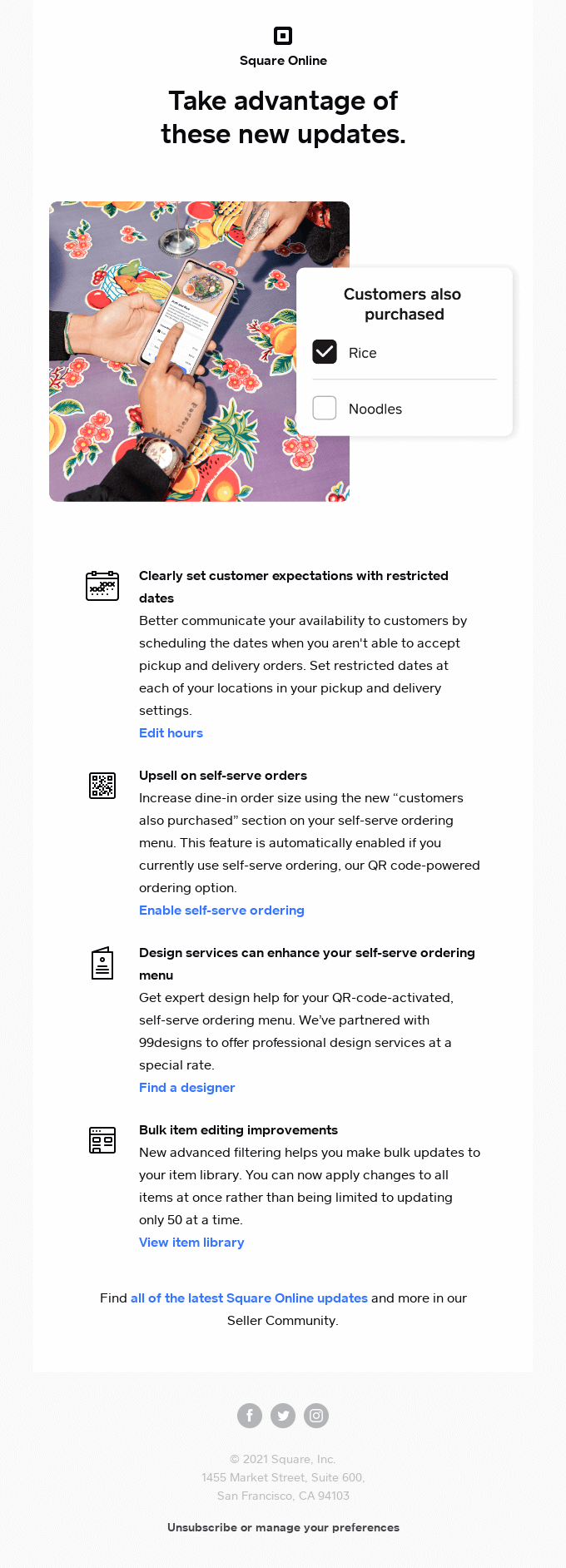5 tips to keep customer experience at the forefront of your email strategy
 ELEVATED EXPERIENCES ARE MEMORABLE EXPERIENCES
ELEVATED EXPERIENCES ARE MEMORABLE EXPERIENCES
Much research has been done on customer experiences (CX) and the impact of progressively profiling your interactions with a consumer to understand the individual over treating them as a segment. Some may consider this concept a part of digital transformation or marketing transformation. However, ensuring you are utilizing your data accurately and effectively is a great start. Even more valuable, paying attention during their interactions with your brand in various spaces is necessary.
Eloquently stated by Forbes, “CX leaders define the customer’s experience as the sum of all experiences a customer has with their business. Each touchpoint counts in their own right, but also are keystones to the bridges that connect entire experiences together.” It is imperative we remember that all our customers are human and need to be and feel understood, heard, and valued. As email marketers we also need to remember that every experience, even outside the email channel, is a reflection of our customers' experience and worthy of consideration.
In the example below, Square shares their product enhancements with subscribers which is great for not only outlining how the service meets the pain points and needs of their customers, but also offers customers the opportunity to give Square a pat on the back for maintaining product quality.
Customer Experience can be misunderstood as “omnichannel” communication, which it is not. Omnichannel is part of the customer's experience, but it is not the sum total of it. The pandemic helped many brands truly begin to understand that the customer experience is emotional, and now it is time to push that understanding to true adoption.
With that, HBR reported that there are emerging cohorts of consumers that have evolved from the pandemic, directly quoted as follows:
- Affordability first (32% of consumers): Living within their means and budget, focusing less on brands and more on product functionality.
- Health first (25%): Protecting their health and that of their family by choosing products they trust to be safe and minimizing risks in the way that they shop.
- Planet first (16%): Minimizing their impact on the environment and buying brands that reflect their beliefs.
- Society first (15%): Working together for the greater good, buying from organizations they find to be honest and transparent.
- Experience first (12%): Living in the moment to make the most of life, often making them open to new products, brands, and experiences.
These cohorts illustrate the emotional changes in our customers and the value they place in each category. These considerations should be applied throughout the customer journey, from CX to content.
CX is a 360 experience for the customer with your brand - seems simple, but there’s quite a lot of data and detail involved in connecting the CX dots. However, it’s important not to get caught up in how vast this experience is and to follow a few simple tips to begin unraveling the mystery and create amazing customer experiences.
5 tips to keep customer experience at the forefront of your email strategy
- Go through the experience yourself, as a “new customer”: This will truly be eye-opening. Take screenshots from your phone or desktop as you go through the process so you don’t miss a beat. Don’t forget to walk through the process from the perspective of different personas to cover the gamut of experiences.
- Analyze where the brand fell short, and where there was success: What can be changed to increase the value of the experience? What parts are truly wonderful and should be highlighted more? What parts should be ditched entirely or re-worked?
- Map out your current email journeys, automations, and touch points: Are there gaps? Are there opportunities missed? Are you sending too much at one time and not enough at another?
- Think through the data you currently use: Are you using all the data you have at your disposal to create progressive profiles of your customers? If not, that’s a highly important project to prioritize for 2022.
- What does your data say about your audience now?: Perform an in-depth analysis of your current database, determine the personas or segments comprised within, how much data you currently have, what you need, etc. How many are active/inactive? This will help you define the starting point for your journey to 360 relationships with your customers.
MOST RECENT ARTICLES
Want to engage your audience and grow your brand? Try Emma's robust easy-to-use product today.














